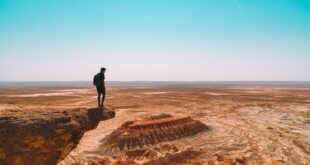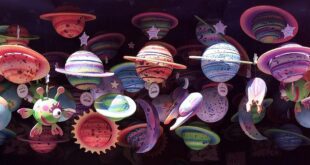Dispelling Plate Tectonics Myths: Top 20 Surprising Facts
Plate Tectonics Made Easy
Plate tectonics, the scientific theory that explains the movement of Earth’s lithosphere, is a fascinating subject that often harbors misconceptions. In this article, we aim to dispel some of the common myths surrounding plate tectonics and present you with the top 20 surprising facts that will undoubtedly leave you awestruck!
1. Earth’s Moving Jigsaw Puzzle
Contrary to popular belief, the Earth’s lithosphere is not one solid piece. Instead, it is divided into several large plates that float and interact with each other.
2. It’s Not a Bumpy Ride
Although it may seem like an earthquake can shake the entire planet, the majority of movements occur along narrow fault lines, leaving vast areas unaffected by tremors.
3. Continents Go for a Stroll
Did you know that continents are not anchored in place? Over millions of years, they drift slowly across the Earth’s surface, sort of like the world’s longest wanderers!
4. The Fetching Conveyor Belts
Plate tectonics serve as nature’s very own conveyor belts, constantly recycling elements deep within the Earth. Mountains form as one plate dives beneath another.
5. Bigger than the Universe
The Earth’s lithosphere is made up of 12 major plates, and interestingly, it would take more than three Earth sizes to cover the surface of the moon entirely!
6. Earth-sized Puzzles
The sizes of tectonic plates are astronomical in scale! The smallest can be compared to the size of a continent, whereas the largest, like the Pacific Plate, encompasses a whopping 15% of the Earth’s surface.
7. Mountain Madness
The formation of mountains can be attributed to the collision and subsequent crumpling of tectonic plates. Mother Nature certainly knows how to transform a rumble into a craggy spectacle!
8. The Ring of Fire
Pacific Rim dwellers are no strangers to volcanic activity. This is due to the presence of the “Ring of Fire,” a region encompassing the Pacific Plate where most volcanic eruptions occur.
9. Mind the Gap
Ever wondered why you don’t have to swim across the Atlantic Ocean to reach Europe? The presence of the Mid-Atlantic Ridge, where new crust is formed, gradually separates Europe from America.
10. Lost Continents
Plates not only collide, they can also move apart. The dispersal of continents results in thinned areas of the Earth’s surface, known as rift zones or even the creation of entirely new oceans.
11. Islands on the Move
The Hawaiian Islands are always on the move! As the Pacific Plate moves northwestward, dormant volcanic islands eventually make way for new ones to form in their place.
12. Spectacular Subduction Zones
Subduction zones are regions where one tectonic plate grinds beneath another. Along with being responsible for intense earthquakes, they can facilitate the formation of awe-inspiring features like trenches and volcanic arcs.
13. Earth’s Deep Hearts Cry Out
An important aspect of plate tectonics is the recycling of crustal materials. When plates collide, sediments and rocks from the ocean floor can be pushed back into Earth’s mantle, deep below the surface. Crystal tears!
14. Titanic Tectonic Megathrust
The largest earthquakes recorded in history, known as megathrust earthquakes, often occur at subduction zones. These immense quakes are responsible for devastating tsunamis.
15. Probing Plate Boundaries
Scientists utilize a range of high-tech instruments, such as seismographs and GPS, to measure tiny, yet significant, movements along plate boundaries. Keeping tabs on Earth’s restlessness has never been easier!
16. Going with the Flow
Fluid-like asthenosphere below the lithosphere allows tectonic plates to move. If only our to-do lists were as flexible!
17. Did They Say Supercontinent?
Several times throughout Earth’s history, nearly all continents came together to form colossal land masses known as supercontinents. The most famous example is Pangea, Mauri-new opinion?”carpisa”.”lanosas all the published results on these four topics in to{continues-copy1} continents then they were adventurers, embarking on incredible expeditions over millions of years!
18. Mystical Magnetic Field
The Earth’s magnetic field acts as a compass for wandering continents. Paleomagnetism studies give hints about past positions of the continents in relation to the North Pole.
19. Mantle Matters
Deep beneath the Earth’s crust lies the mantle, a semi-solid layer responsible for many tectonic plate movements. It’s a hot spot–quite literally!
20. Oceanic vs. Continental Crust
Oceanic crust, found beneath the oceans, is denser and thinner than continental crust, which forms landmasses. Clashing between these two types of crust can have dramatic geological implications.
Now that you’re acquainted with these surprising facts about plate tectonics, let your curiosity continue to flow and marvel at the remarkable forces shaping our ever-dynamic planet!
 Mind Uncharted Explore. Discover. Learn.
Mind Uncharted Explore. Discover. Learn.




